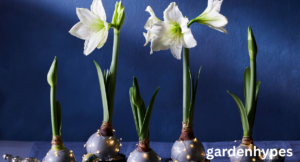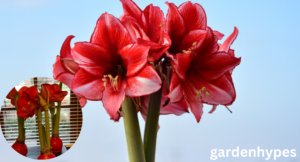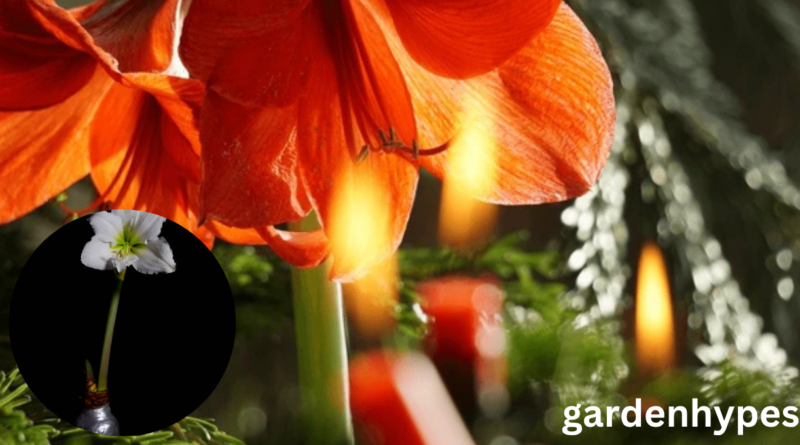Waxed Amaryllis of Blooming Beauty
If you’ve never seen a waxed Amaryllis before, you’re in for a treat. Imagine a vibrant flower blooming from a sleek, wax-covered bulb—no soil, no pot, and no mess. Just pure botanical magic. These ornamental wonders are taking over windowsills, holiday tables, and office desks around the world—and for good reason.
Waxed Amaryllis is more than just a pretty flower. It’s a fusion of natural beauty and modern convenience. This unique plant doesn’t need to be planted in soil or watered, and it still produces massive, trumpet-shaped blooms that can light up a room. Think of it as nature’s version of low-maintenance elegance.
click in link Does epsom salt kill weeds
Perfect for plant lovers and novices alike, waxed Amaryllis has become a hot trend in home décor, holiday gifting, and floral design. Want to know how this miracle plant works? Let’s dig in (without digging anything up, of course!).
What Is a Waxed Amaryllis?
Understanding the Basics
At its core, a waxed Amaryllis is exactly what it sounds like—a flower bulb encased in wax. The wax isn’t just for looks; it’s a fully functional design that allows the flower to grow and bloom without any external help. There’s no need to water it, plant it, or even fertilize it. The bulb already holds all the energy and nutrients it needs to produce a stunning bloom.
Inside every Amaryllis bulb are reserves of starches and stored nutrients—enough to sustain the plant through its entire blooming cycle. When it’s waxed, the bulb is sealed off, reducing moisture loss and protecting it from external elements. That means you can place it anywhere without worrying about soil spills or watering schedules.
Waxed Amaryllis usually bloom within 4 to 6 weeks of purchase. You’ll first notice a sturdy green stalk poking its way out of the top of the bulb, and then, almost like magic, the vivid flowers begin to unfold.
Why Waxed Instead of Potted?
The main appeal of waxed Amaryllis is the sheer simplicity. Traditional Amaryllis bulbs require planting in soil, consistent watering, and monitoring for pests or root rot. With waxed varieties, those steps are eliminated. You don’t even need a container—they stand up on their own, often on a small metal or plastic base affixed to the bulb’s bottom.
People love them for:
- Office desks where watering is inconvenient
- Gifting during the holidays (especially around Christmas)
- Small spaces where traditional potted plants won’t fit
- Decorative centerpieces that look elegant and modern
Waxed Amaryllis also come in various colors of wax—metallic golds, festive reds, icy blues—which means they double as decorative art pieces. Think of them as the plant world’s version of “set it and forget it.”
The History and Origin of Amaryllis
Where It All Began
Amaryllis is a flowering bulb native to South Africa and parts of South America, particularly regions in Argentina and Chile. The most commonly cultivated species, Hippeastrum, actually became popular in Europe in the 18th century. These big, trumpet-like blooms captivated gardeners and botanists alike with their drama and beauty.

The name “Amaryllis” comes from Greek mythology. Legend tells of a maiden named Amaryllis who fell in love with a shepherd. To win his affection, she pierced her heart with a golden arrow each day until a crimson flower blossomed where her blood had fallen. Romantic and slightly morbid? Absolutely. But it does reflect the intense passion and striking beauty of the flower.
click in link Does epsom salt kill weeds
From Bulbs to Beauties: How Waxing Changed the Game
Traditional Amaryllis cultivation requires patience. You had to plant the bulb months in advance, water it regularly, and hope it would bloom on time—usually during the winter holidays. But in recent years, horticulturalists discovered a clever way to let these bulbs bloom on their own: by sealing them in wax.
The process not only protects the bulb but also stores heat and reduces moisture loss. The result? A fully self-contained flower that thrives without care.
Waxed Amaryllis gained traction in European holiday markets first, especially in Germany and the Netherlands, where floral innovation is huge. Now, they’re found in garden centers and gift shops around the globe.
How Are Waxed Amaryllis Made?
The Waxing Process Step-by-Step
Creating a waxed Amaryllis isn’t just about dipping a bulb in wax and calling it a day. It’s a careful process that involves timing, temperature control, and plant science.
Here’s how it works:
- Selection: Only the healthiest, premium-grade Amaryllis bulbs are used.
- Cleaning: The outer layers of the bulb are carefully removed, and roots are trimmed.
- Heating the Wax: A special plant-safe wax is melted to a precise temperature.
- Dipping: The bulb is dipped or rolled in wax, sometimes multiple times, for even coating.
- Cooling: The bulb is left to cool and harden, sealing in the nutrients.
- Base Attachment: A stand or metal support is glued to the bottom so the bulb can stand upright.
Once finished, the bulb is ready to bloom. Most waxed Amaryllis are already “pre-chilled” or given the right cues to start blooming shortly after purchase.
Is the Wax Edible or Safe?
Short answer: No, the wax is not edible. While it’s generally non-toxic to humans, it’s not food-grade and shouldn’t be consumed. Keep it away from pets too—especially curious cats who like to nibble plants. Some waxed bulbs include glitter or metallic finishes, which, while stunning, can be harmful if ingested.
Always place your waxed Amaryllis out of reach of pets and children, just to be safe.
Why Waxed Amaryllis Are So Popular
Mess-Free and Maintenance-Free
Let’s face it—most of us forget to water our plants. Or we water too much. Or the pot leaks onto our furniture. Waxed Amaryllis solves all of those problems. It doesn’t need water. It doesn’t need soil. And best of all, it won’t spill or stain your favorite tablecloth.
The appeal is universal:
- For busy people: It thrives without daily attention.
- For plant novices: No special skills required.
- For décor lovers: Sleek design meets botanical beauty.
You literally unwrap it and wait. The bloom will do its thing.
click in link Does epsom salt kill weeds

Perfect for Gifting and Décor
Nothing says “wow” like a flower that grows from wax. That’s why waxed Amaryllis have become a top choice for gifting during Christmas, birthdays, and even corporate events. They’re compact, beautiful, and feel luxurious without being high-maintenance.
Pair one with a ribbon or a holiday card, and you’ve got a ready-made gift that feels both personal and stylish.
FAQs
- How long does a waxed Amaryllis last?
A waxed Amaryllis typically blooms for 2 to 4 weeks, depending on room temperature and lighting. In cooler environments, the blooms tend to last longer. From the time you notice the first green stalk emerging, you can expect full blooms within 4–6 weeks. After blooming, the bulb is usually discarded, although some gardeners attempt to reuse it with careful post-bloom care. - Can I plant my waxed Amaryllis after it blooms?
Technically, yes—but it’s a bit tricky. Since the wax seals the bulb and often the roots are removed, you’ll need to carefully peel off the wax without damaging the bulb, then replant it in soil. With proper care—sunlight, watering, and fertilizing—it may bloom again the following season, although it can take a full year or longer to recover. - Is waxed Amaryllis pet safe?
Amaryllis bulbs are toxic to pets, especially cats and dogs. The wax itself is usually non-toxic, but ingestion of the plant or bulb can lead to symptoms like vomiting, drooling, or lethargy. Always place waxed Amaryllis in areas that are inaccessible to pets to avoid any risks. - How do I make my own waxed Amaryllis?
DIY waxed Amaryllis is possible but requires caution. First, clean and dry a healthy bulb, trim the roots, and dip it in melted, non-toxic paraffin wax (around 130–150°F). Let the wax set, attach a stand, and place it in a bright room. Be sure not to damage the bulb during waxing or it may not bloom. Also, avoid using scented or colored waxes that might harm the plant. - Why isn’t my waxed Amaryllis blooming?
Several factors can delay or prevent blooming. If your waxed Amaryllis isn’t blooming:
- It may be too cold (ideal room temp is 65–75°F).
- It may lack adequate light—move it closer to a window.
- It may be past its viable bloom cycle if it’s been stored too long.
Unfortunately, once the bulb’s energy reserves are depleted, it won’t bloom. Make sure to buy from reputable sellers for the best results.
